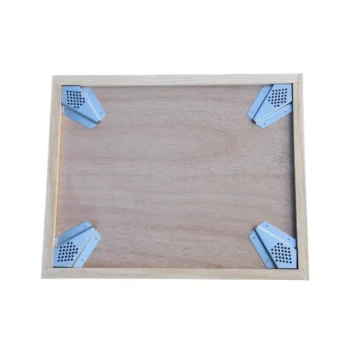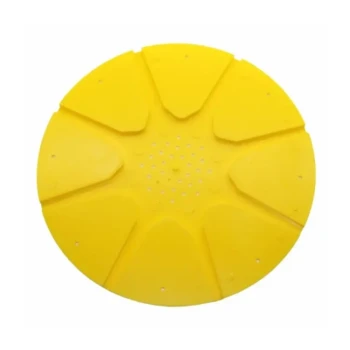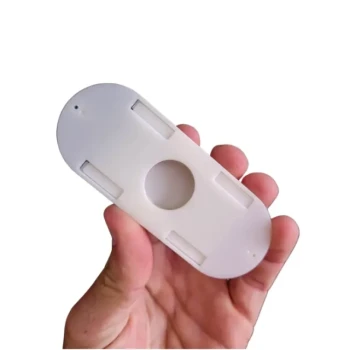For a bee-proof seal, your pant legs must be pulled down over the top of your beekeeping boots. This simple step is critical for safety because it directly counters a bee's natural instinct to crawl upwards. By creating a downward-facing overlap, you eliminate any gaps a bee could use to get inside your protective clothing.
The single most important goal is to create an impassable, overlapping barrier. Because bees instinctively crawl upward when agitated, pulling your pants over your boots is the standard and most effective method for preventing stings on your legs and torso.

The Core Principle: Eliminating Upward Paths
To bee-proof your gear effectively, you have to think like a bee. A loose bee on your suit is not just looking for a spot to sting; it's often crawling and exploring, searching for an opening.
Understanding Bee Behavior
When bees feel threatened or are dislodged during an inspection, their tendency is to crawl upwards. They will follow any seam or gap they find, seeking entry into a darker, protected space—which could be the inside of your bee suit.
Why "Over the Boot" is the Standard
Pulling your pant leg down over the outside of your boot creates a physical dead end. A bee crawling up your boot will be met with a wall of fabric hanging down. It cannot find an upward path to get inside.
This method effectively directs any exploring bees back down and away from an entry point. It is the most reliable way to secure this critical junction.
Securing the Seal
Simply pulling the fabric down is good, but ensuring it stays in place is better. Professional bee suits often have elastic cuffs or built-in straps at the ankle for this exact purpose. If you are using standard coveralls, you can use ankle straps, bungee cords, or even duct tape to cinch the pant leg tightly around your boot.
Common Pitfalls: The "Tuck-In" Method
You may have heard advice to tuck your pants into your boots. While this instinct is common for preventing ticks or other ground-crawling insects from getting in, it presents a distinct risk in beekeeping.
The Inherent Flaw
Tucking your pants into your boots creates an upward-facing opening at the top of your boot. A bee that lands on your boot can crawl directly up and over the rim, gaining immediate access to the inside of your pants.
This configuration works with the bee's upward-crawling instinct, not against it, making it a significantly less secure option.
When It's a Last Resort
Tucking pants in is better than leaving a large, loose gap. If your pant legs are too short to pull down over your boots securely, tucking them in is a temporary, last-resort measure. However, you must recognize this as a compromise that carries a higher risk of stings.
Making the Right Choice for Your Gear
The correct method depends on creating a secure, overlapping seal with the gear you have.
- If you have a professional bee suit: Use the built-in elastic or Velcro cuffs to cinch the pant leg tightly over the outside of your boot.
- If you are using loose-fitting coveralls or pants: Ensure they are long enough to go over your boots, then use straps or tape to secure the cuff around the boot.
- If your pant legs are too short to go over your boots: Tucking them in is a high-risk compromise; the best solution is to acquire pants or a suit that fits properly for beekeeping.
A secure connection between your pants and boots is the foundation of a confident and sting-free beekeeping experience.
Summary Table:
| Method | Description | Effectiveness |
|---|---|---|
| Pant Legs Over Boots | Creates a downward-facing barrier that blocks bees' instinct to crawl upwards. | High (Recommended) |
| Pant Legs Tucked In | Creates an upward-facing opening that bees can easily exploit. | Low (Risky) |
Protect your apiary team with the right gear. A secure bee-proof seal is the foundation of safe beekeeping. HONESTBEE supplies commercial apiaries and beekeeping equipment distributors with high-quality, durable beekeeping boots and protective clothing designed for maximum safety and comfort. Ensure your team is properly equipped for a sting-free season. Contact HONESTBEE today to discuss your wholesale needs.
Visual Guide

Related Products
- Cotton Beekeeping Suit and Round Hat with Veil Bee Keeper Protective Gear
- Professional Beekeeping Suit for Kids and Girls Childrens Bee Keeper Suit
- Heavy Duty Cowboy Beekeeper Hat with Visibility Veil Outdoor Professional Beekeeping Protective Gear
- Beekeeper Cowboy Hat and Veil for Beekeeping
- HONESTBEE Professional Telescopic Pole Bee Swarm Catcher
People Also Ask
- How should a bee suit be cleaned? Protect Your Investment and Ensure Apiary Safety
- What should be considered regarding the color of beekeeping clothing? Ensure Your Safety and Keep Bees Calm
- How should a beekeeping suit be hung to maintain its shape? Protect Your Investment with Proper Storage
- What factors should be considered when choosing a beekeeping suit? Balance Safety, Comfort & Performance
- What are bee suits made of? Choosing the Right Material for Maximum Protection & Comfort



















